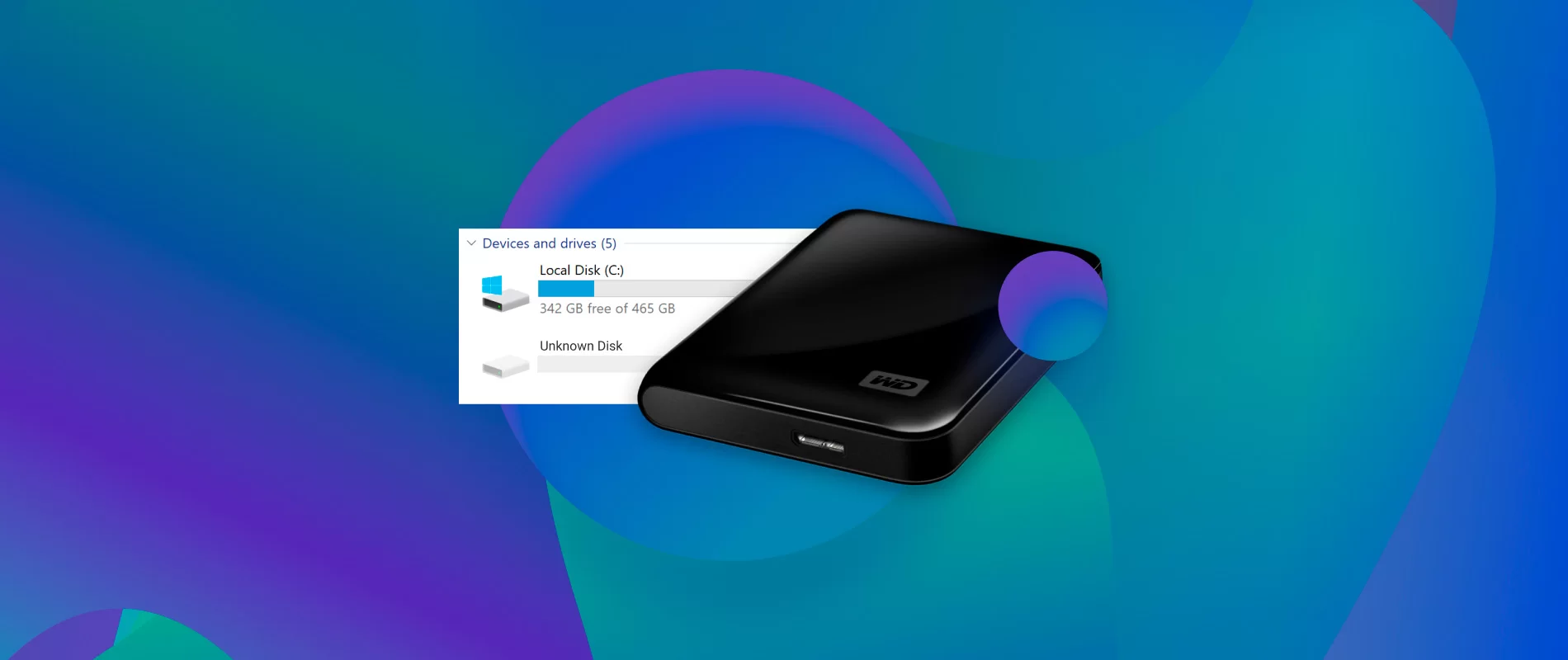How to Fix Hard Drive Not Detected During Windows Installation
If you are one of the users who encountered an empty space when choosing a drive or hard partition to install Windows, and the message “not drives were found” caused you concern, we have good news for you. The problem of not recognizing the hard drive when installing Windows has many reasons, and fortunately, all of these reasons have their own solutions, and by implementing them, you can identify the hard drive partitions and continue the process of installing Windows.
Incompatible drivers, incorrect BIOS or UEFI settings, partition format incompatibility, etc. are among the most important reasons that can cause you to face the problem of not recognizing the hard drive when installing Windows, and all you have to do is to find specific solutions for each. Try it and get your desired result.
Of course, suppose you are planning to install a Windows server and you don’t want to face such issues. In that case, we must say that you are very lucky because by purchasing a Windows virtual server, you will be the owner of a server with Windows which if its features are suitable for your needs. Choose, be sure that with your Windows virtual server, you can focus on your main goals and continue on the path without worrying about the edges such as the hard drive not being recognized when installing Windows.
Now it’s time to get to know the reasons and effective solutions to solve the problem of not recognizing the hard drive when installing Windows and go through this daunting process safely:
Table of Contents
- Reasons for the problem of not recognizing the hard drive in Windows installation
- Method 1. Restart your system.
- Method 2. Try another SATA port.
- Method 3. Update the RAID hard drive driver.
- Method 4. Check BIOS or UEFI settings.
- Method 5. Reset the BIOS.
- Method 6. Format the system hard disk.
- Method 8. Check the status of the hard disk.
- Method 9. Change your system hard disk.
Reasons for the problem of not recognizing the hard drive in Windows installation
This error occurs when the Windows installation tool is unable to identify the drive or hard disk partition of your system, and in this case, you cannot actually select the desired partition to install Windows and enter the next step.

But what is the reason for this problem?
This problem has many reasons, the most important of which are the following:
- Hard disk failure
- Loose or improperly connected SATA cable
- Defective SATA cables
- Incorrect BIOS/UEFI settings
- Improper partitioning or formatting of the hard drive
- Failure to install, incomplete or outdated hard disk drivers
- Windows system file corruption
Failure of connections on the motherboard - Incorrect connection protocol of motherboard and hard disk
- Hardware interference
- Software issues
- …
The above cases are among the most important reasons for the problem of not recognizing the hard drive, and if you are ready, we will provide you with the solutions for each of them so that you can get started and solve this problem as quickly as possible.
Method 1. Restart your system.
Restarting the system is one of the first solutions that you can use to solve most problems. Of course, this method works for solving software problems, and hardware problems, including the hard drive, cannot be solved with this method.
In general, it is recommended that you try this method at the very beginning and make sure that there are no software issues and interactions. Try the following methods after you see that the problem is not solved so easily.
Method 2. Try another SATA port.
The SATA port is the physical interface between the motherboard and the hard disk, and the defective cable or the port where the SATA cable is connected, causes the hard disk not to be recognized error when installing Windows.
Also, due to the fact that the motherboard of the system has several SATA ports, the signal interference or the incompatibility of the SATA Mode settings with the hard drive settings can be the reason for the hard drive not being found when installing Windows.
It is better to point out that this solution is suitable for solving the problem of not finding the hard drive in desktop computers, and changing the SATA port in laptops does not help to solve the problem of not recognizing the hard drive, because in most laptops, the SATA port is built in. and does not have an independent structure.
So changing the SATA port can be a good solution to solve this problem in desktop computers. Of course, before doing this, it is better to make sure that the SATA cable is healthy and then go through the following steps.
1. Turn off your system and unplug it.
2. Open the computer case and find the SATA hard disk cable.
3. Check if the SATA cable is firmly connected to the hard drive and the motherboard.
4. Press the side part of the cable and disconnect it from the port.
5. Connect the cable to another SATA port.
Usually, motherboards have 2 to 6 SATA ports that are numbered and you can find them by looking closely.
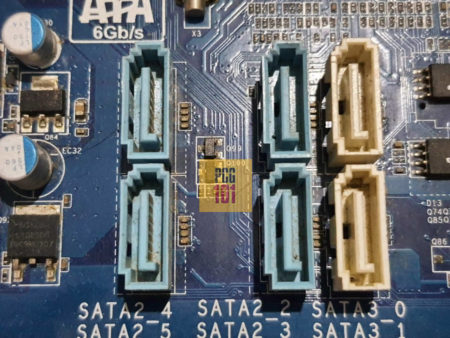
6. After making sure that the cable is firmly connected to the SATA port, close the system case again.
7. Turn on the system and enter BIOS/UEFI by repeatedly pressing the del, f2, ESC or … button.
8. Go to the SATA Mode section through the Storage or SATA Configuration section and set it to AHCI or IDE (preferably AHCI).

AHCI is suitable for most new versions of Windows (7 and later) and has better performance in addition to providing more advanced features.
9. Save changes and exit BIOS/UEFI.
10. Turn on your system.
11. Start the installation process and see if the problem of not recognizing the Windows hard drive is solved or not.
Method 3. Update the RAID hard drive driver.
To implement this method, you must first download the new Raid Controller driver compatible with the system motherboard manufacturer and put it in a USB flash drive. So follow the steps below:
1. Using another system, download and save the appropriate RAID controller driver from the manufacturer’s website (eg Intel).
2. Connect the USB flash drive to the system and unzip the driver file and extract its contents in the flash drive.
3. Connect the bootable flash containing the Windows installation file and the flash driver to the system where you intend to install Windows.
4. Start the Windows installation process with a bootable flash and when you get to the partition selection stage (an empty window without a hard partition), click on the Load Driver option.
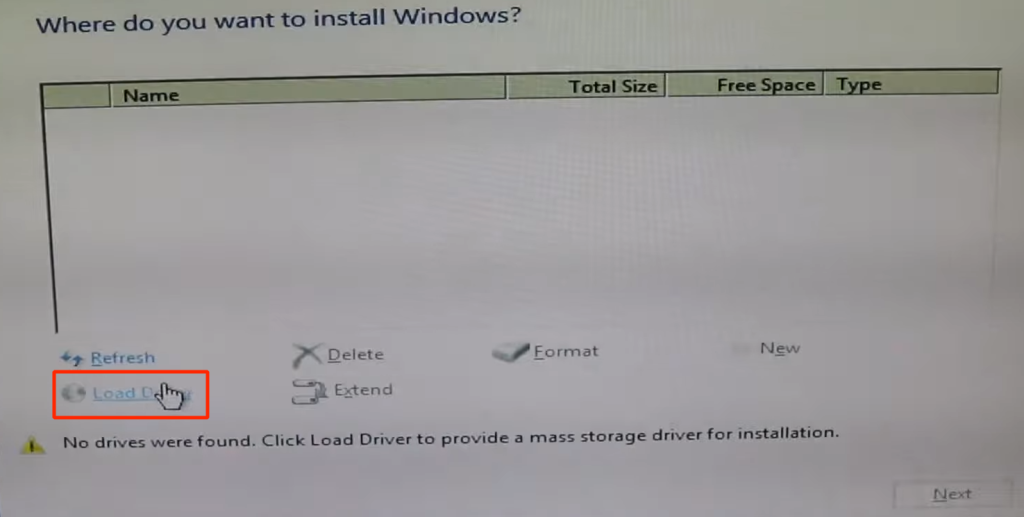
5. From the Load Driver window, click Browse.

6. Find the controller driver folder and click ok.
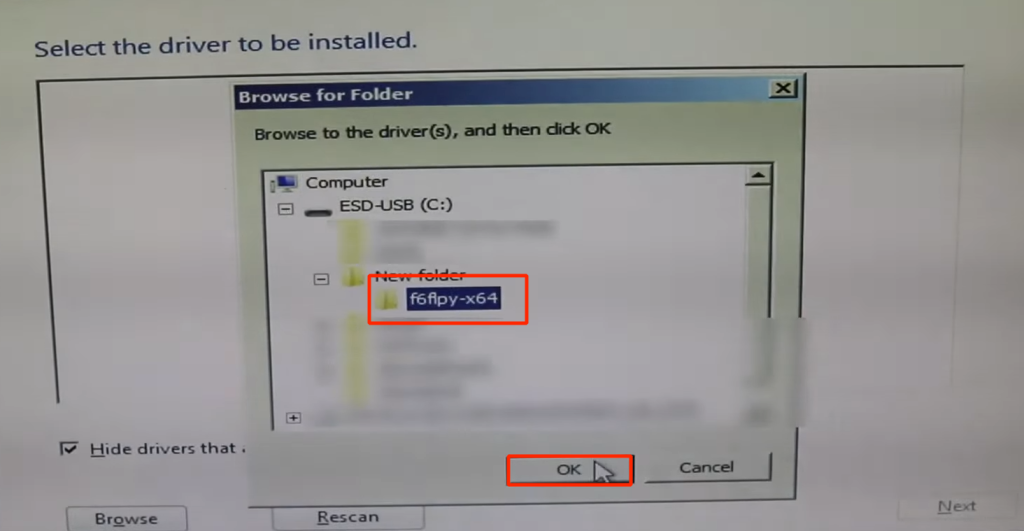
7. Select the found driver from the list of drivers and click Next.

If you do not see a driver in the list, just uncheck the Hide option so that the drivers appear.
8. Click refresh once.
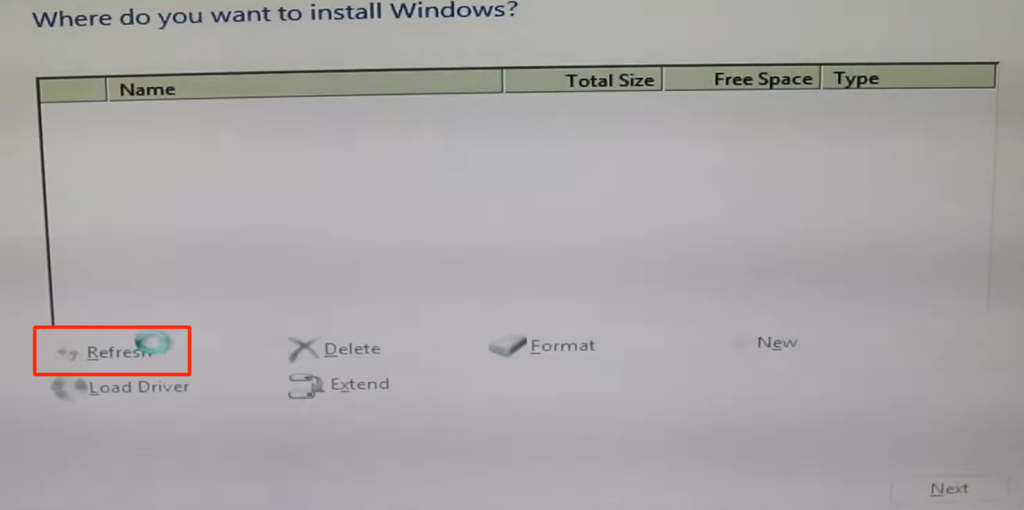
Most likely, after doing this, you will come across your hard drive partitions, you just need to select the desired partition to install Windows and enter the next step.
Method 4. Check BIOS or UEFI settings.
To solve the problem of not recognizing the hard drive when installing Windows, it is better to go to the BIOS and see if the BIOS settings are configured to recognize the hard drive or not.
So follow the steps below:
1. Restart your system and before booting up, press the del button, F or the appropriate BIOS button several times to enter the BIOS settings section.
2. Open the Advanced tab with the arrow keys and go to the SATA Configuration section.

3. Now that you have found SATA Mode, hit enter and choose one of the 4 modes: RAID, IDE, AHCI and ATA (preferably AHCI).
4. Save the changes and exit the BIOS.
5. Restart the system and check if the problem of hard drive not being recognized during Windows installation is solved.
Method 5. Reset the BIOS.
If updating the controller and changing the BIOS settings did not solve the problem of not recognizing the hard disk, you can also try the BIOS reset method.
1. Restart your system and before booting up, press the del button, F or the appropriate BIOS button several times to enter the BIOS settings section.
2. Go to the exit tab and select Restore Defaults.
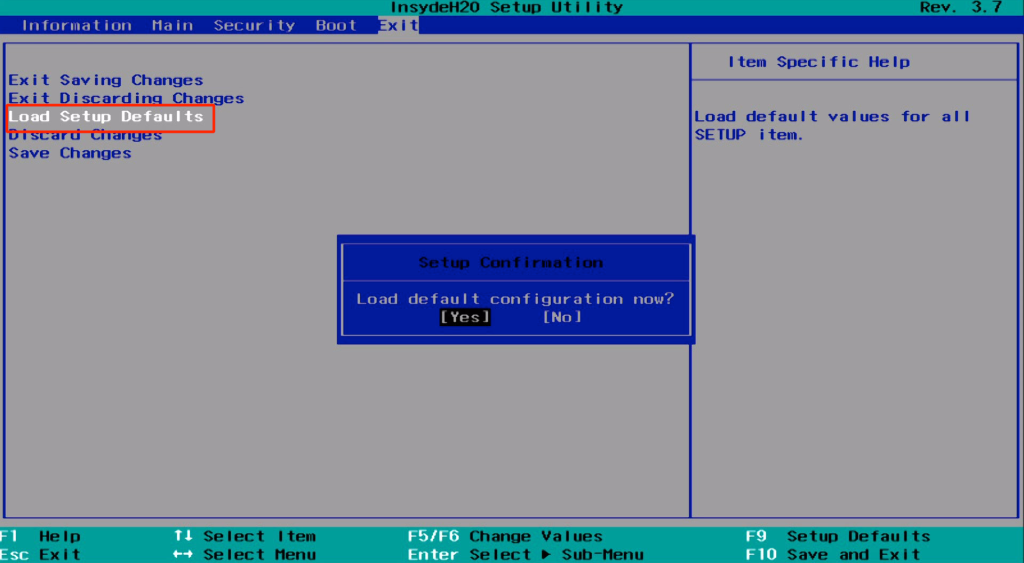
3. Select yes and press enter to restore the BIOS.
4. Save the changes and exit the BIOS.
Check if the problem of partitions disappearing during Windows installation is solved or not.
Method 6. Format the system hard disk.
If you have backed up your important system data, you don’t have to worry about deleting the hard disk partitions, we recommend that you format the system hard disk by following the steps below:
1. At the stage of selecting the partition to install Windows, press Shift + F10 to open the command prompt.
2. Run the following command to open the Disk Partitioning utility:
diskpart3. Check the list of hard disk partitions with the following command:
listdisk4. Select the desired disk and put its number instead of x in the following command and run it:
select disk x5. Run the following command to delete the desired disk:
clean6. Run the following command to create a primary partition:
create partition primary7. Set the format of this partition with the following command:
format fs=ntfs quick8. Run the exit command to exit this tool:
exit
These commands delete the selected disk or disks and create a primary partition with the ntfs file system format that you can use to install Windows.
Method 8. Check the status of the hard disk.
If you are still unable to solve the problem of the hard drive not being recognized during installation by implementing the above methods, we recommend that you check the status of the hard drive and see if the hard drive itself is working properly or not! If the hard drive is damaged or defective, it is clear that the above settings or changes will not be able to repair a damaged hard drive.
So follow the steps below:
1. Press the Win + R key combination to bring up the run window.
2. Type devmgmt.msc and press enter.
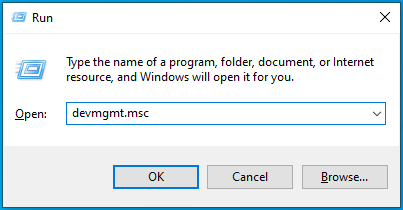
3. Click on the arrow next to the Disk Drives category to open the corresponding list.
4. Right click on the hard drive and select Properties.
5. Go to the General or Driver tab and check the device status section.
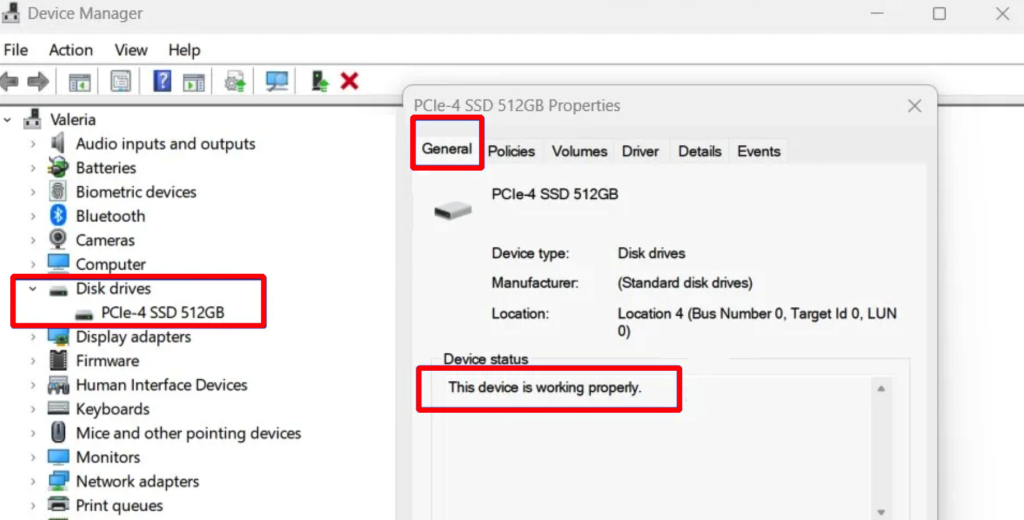
The above message indicates that your hard drive is working properly.
But when you see the following message, you should be a little worried because it shows that your hard drive is not working properly and needs to be repaired or replaced.

Method 9. Change your system hard disk.
If you find that the problem is with your hard drive and its failure or failure caused the problem of not recognizing the hard drive when installing Windows, it is time to repair it or, if necessary, replace it with a healthy hard drive.
If you are not an expert in this field, we recommend that you seek the help of an expert to buy a new hard drive and replace it with the defective hard drive of your system.
Conclusion
The problem of not recognizing the hard drive when installing Windows has many reasons, the most important of which are incorrect BIOS settings, hard drive drivers not being updated, and defective sata port. If you do not know what is the reason for this problem, just keep calm and try to remove this problem by implementing the above methods. If you find that your system hard drive is damaged, you can make a new start by buying and replacing it with a healthy hard drive. After you have installed your Windows, you can provide the necessary conditions for the optimal and trouble-free operation of the hard drive with solutions such as freeing up the hard drive space in Windows.
Thank you for staying with us until the end of the article. We hope that reading this article was useful for you. If you have any questions, requests and need guidance, you can contact us by registering your opinion so that we can answer you as soon as possible.










